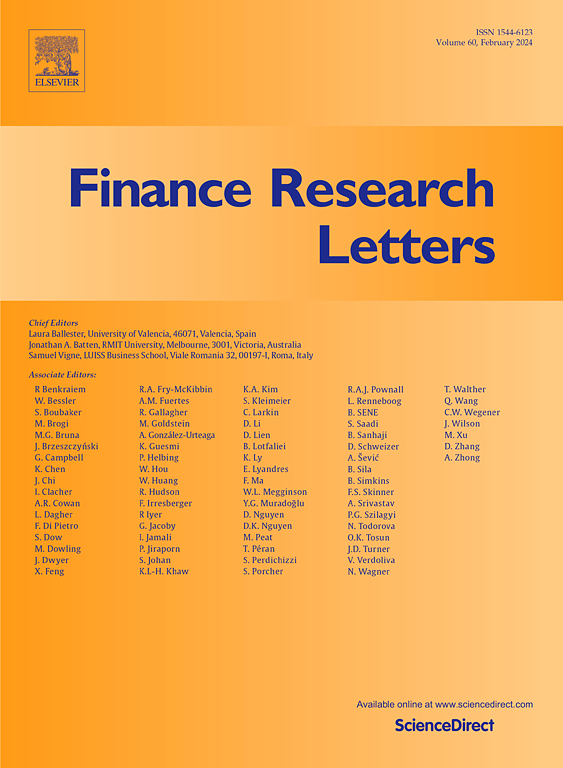Tail risk in Bitcoin under the Basel framework
IF 6.9
2区 经济学
Q1 BUSINESS, FINANCE
引用次数: 0
Abstract
We examine Bitcoin’s tail risk within the Basel framework using Value-at-Risk and Expected Shortfall. Daily data from 2018 to 2024 are analyzed by comparing the Stochastic Volatility with Correlated Jumps (SVCJ) model with its nested specifications and standard GARCH-type benchmarks (Duffie et al., 2000). The SVCJ framework is particularly suitable for cryptocurrencies, as it jointly captures stochastic volatility and correlated jumps in both returns and variance. Empirical results indicate that SVCJ delivers more accurate tail-risk forecasts than alternative models across horizons and confidence levels. To our knowledge, this is the first study to systematically evaluate the SVCJ model for Bitcoin tail risk, underscoring its relevance for robust risk management under Basel standards.
巴塞尔框架下比特币的尾部风险
我们使用风险价值和预期缺口来研究巴塞尔框架下比特币的尾部风险。通过将随机波动率与相关跳变(SVCJ)模型与其嵌套规范和标准garch类型基准进行比较,分析2018年至2024年的每日数据(Duffie et al., 2000)。SVCJ框架特别适用于加密货币,因为它可以同时捕获收益和方差的随机波动和相关跳跃。实证结果表明,在不同的视界和置信水平上,SVCJ比其他模型提供了更准确的尾部风险预测。据我们所知,这是第一个系统评估比特币尾部风险的SVCJ模型的研究,强调了它与巴塞尔标准下稳健风险管理的相关性。
本文章由计算机程序翻译,如有差异,请以英文原文为准。
求助全文
约1分钟内获得全文
求助全文
来源期刊

Finance Research Letters
BUSINESS, FINANCE-
CiteScore
11.10
自引率
14.40%
发文量
863
期刊介绍:
Finance Research Letters welcomes submissions across all areas of finance, aiming for rapid publication of significant new findings. The journal particularly encourages papers that provide insight into the replicability of established results, examine the cross-national applicability of previous findings, challenge existing methodologies, or demonstrate methodological contingencies.
Papers are invited in the following areas:
Actuarial studies
Alternative investments
Asset Pricing
Bankruptcy and liquidation
Banks and other Depository Institutions
Behavioral and experimental finance
Bibliometric and Scientometric studies of finance
Capital budgeting and corporate investment
Capital markets and accounting
Capital structure and payout policy
Commodities
Contagion, crises and interdependence
Corporate governance
Credit and fixed income markets and instruments
Derivatives
Emerging markets
Energy Finance and Energy Markets
Financial Econometrics
Financial History
Financial intermediation and money markets
Financial markets and marketplaces
Financial Mathematics and Econophysics
Financial Regulation and Law
Forecasting
Frontier market studies
International Finance
Market efficiency, event studies
Mergers, acquisitions and the market for corporate control
Micro Finance Institutions
Microstructure
Non-bank Financial Institutions
Personal Finance
Portfolio choice and investing
Real estate finance and investing
Risk
SME, Family and Entrepreneurial Finance
 求助内容:
求助内容: 应助结果提醒方式:
应助结果提醒方式:


